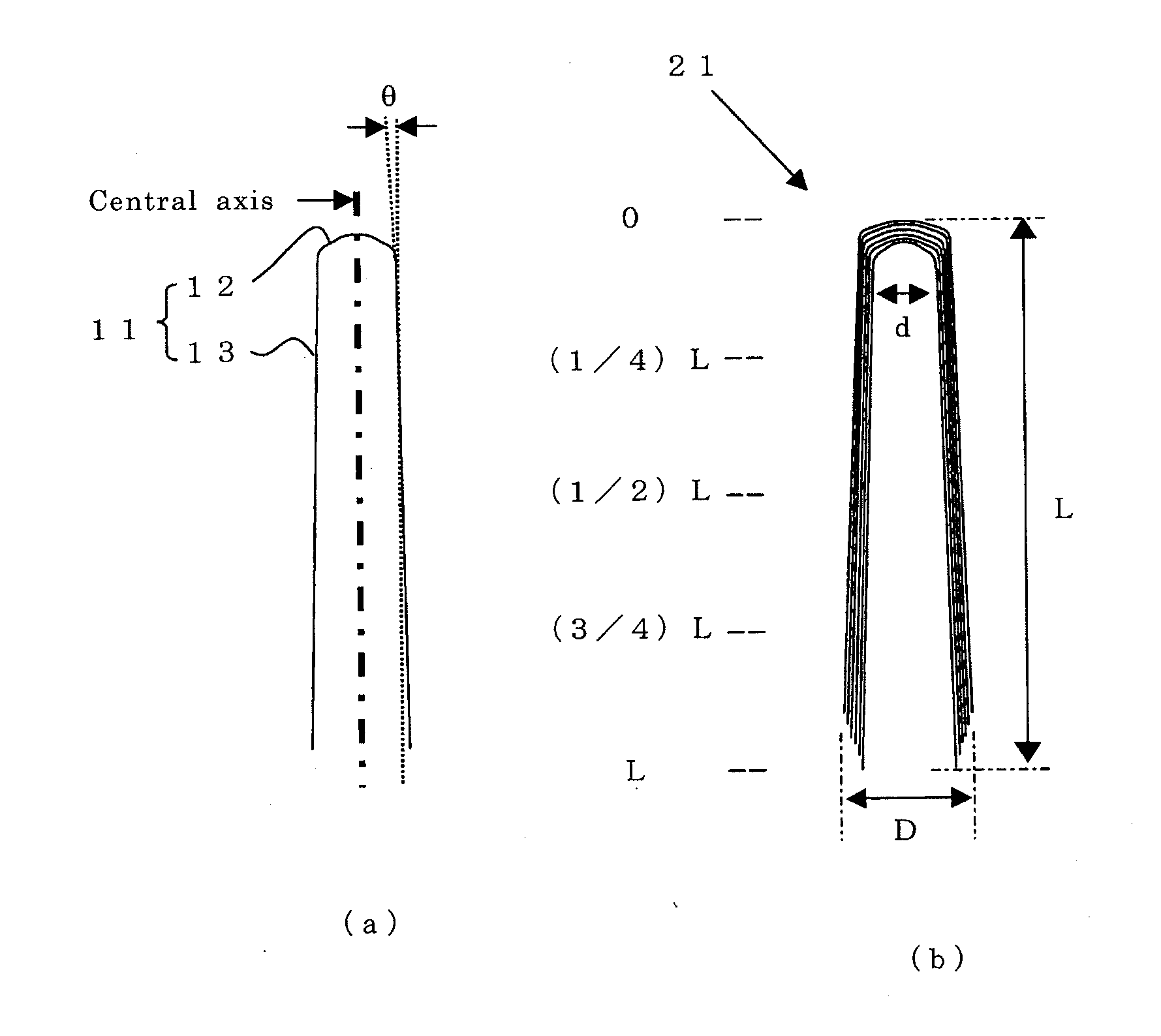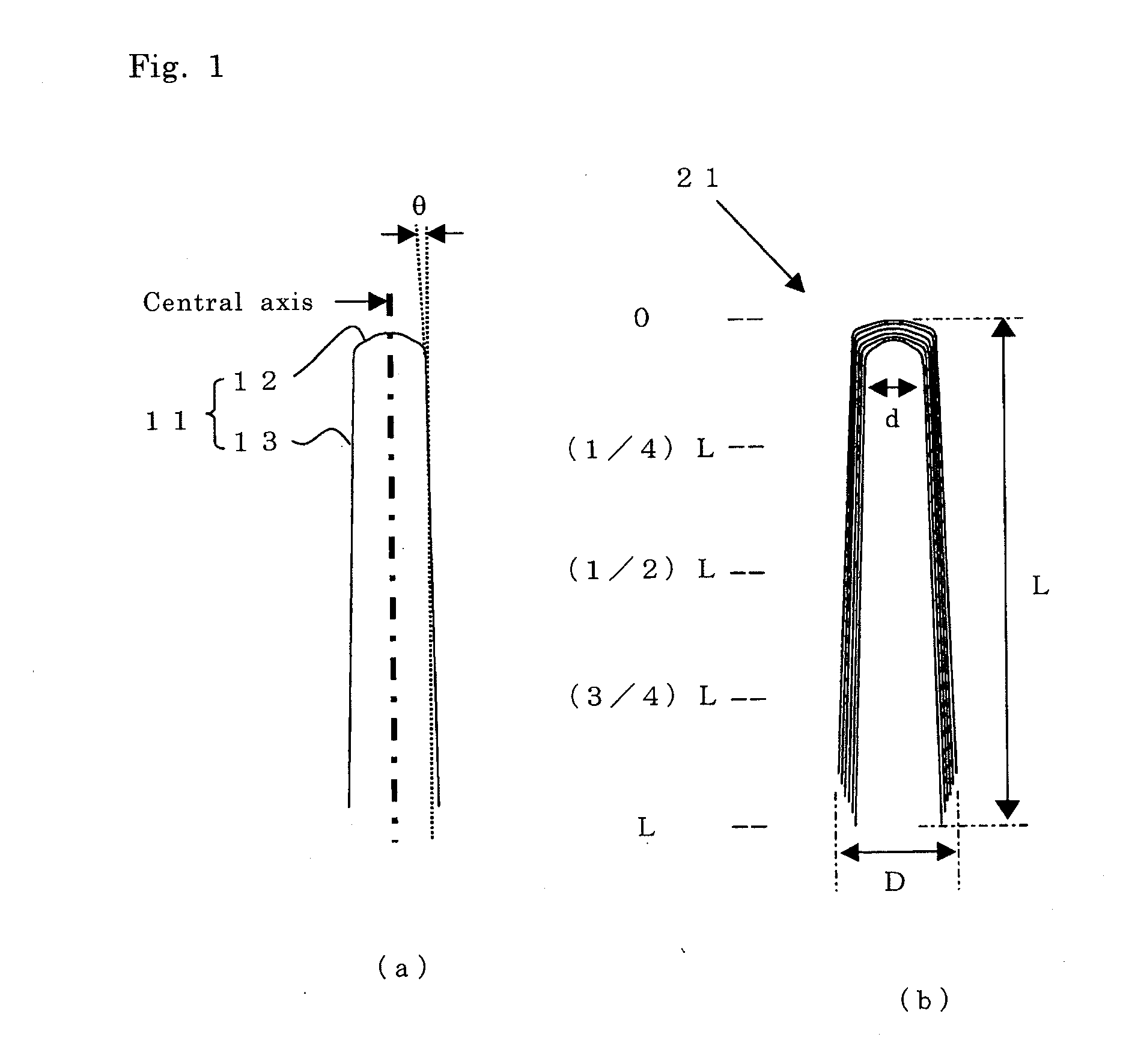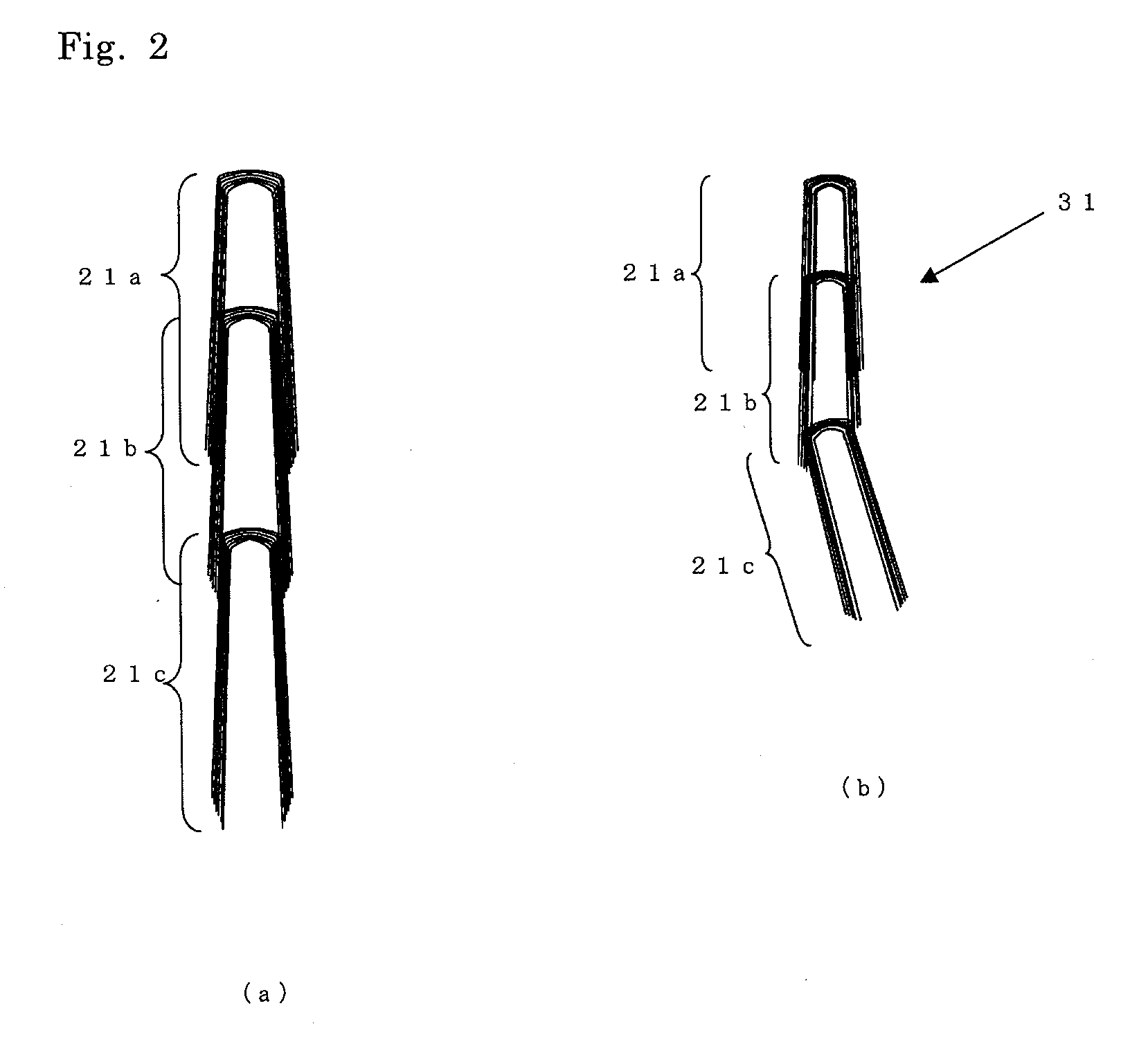Fine carbon fiber, fine short carbon fiber, and manufacturing method for said fibers
a technology of carbon fiber and manufacturing method, which is applied in the direction of catalyst activation/preparation, metal/metal-oxide/metal-hydroxide catalyst, physical/chemical process catalyst, etc., can solve the problem of not achieving sufficient conductivity, difficult to cleave strong carbon sp-2 bond, and insufficient conductivity. , to achieve the effect of small energy consumption, good conductivity and large bonding strength
- Summary
- Abstract
- Description
- Claims
- Application Information
AI Technical Summary
Benefits of technology
Problems solved by technology
Method used
Image
Examples
examples
[0119]There will be described Examples of the present invention together with Comparative Examples.
example a1
[0120]In 500 mL of ion-exchanged water were dissolved 115 g of cobalt nitrate [Co(NO3)2.6H2O: molecular weight 291.03] (0.40 mol) and 102 g of magnesium nitrate [Mg(NO3)2.6H2O: molecular weight 256.41] (0.40 mol), to prepare raw-material solution (1). Furthermore, 220 g of powdery ammonium bicarbonate [(NH4)HCO3: molecular weight 79.06] (2.78 mol) was dissolved in 1100 mL of ion-exchanged water, to prepare raw-material solution (2). Next, raw-material solutions (1) and (2) were mixed at a reaction temperature of 40° C., after which the mixture was stirred for 4 hours. The precipitate formed was filtered, washed and then dried.
[0121]The product was calcined and pulverized with a mortar to provide 43 g of a catalyst. A crystal lattice constant “a” (cubic system) of the spinel structure in this catalyst was 0.8162 nm, and a metallic element ratio in the spinel structure of the substitutional solid solution was Mg:Co=1.4:1.6.
[0122]A quartz reaction tube (inner diameter: 75 mmφ, height: ...
example a2
[0125]In 900 mL of ion-exchanged water was dissolved 123 g of cobalt nitrate [Co(NO3)2.6H2O: molecular weight 291.03] (0.42 mol) and then was added 17 g of magnesium oxide [MgO: molecular weight 40.30] (0.42 mol), and the mixture was mixed to prepare raw-material slurry (1). Furthermore, 123 g of powdery ammonium bicarbonate [(NH4)HCO3: molecular weight 79.06] (1.56 mol) was dissolved in 800 mL of ion-exchanged water, to prepare raw-material solution (2). Next, raw-material slurry (1) and raw-material solution (2) were mixed at room temperature, after which the mixture was stirred for 2 hours. The precipitate formed was filtered, washed and then dried. The product was calcined and pulverized with a mortar to provide 48 g of a catalyst. A crystal lattice constant “a” (cubic system) of a spinel structure in this catalyst was 0.8150 nm, and a metallic element ratio in the spinel structure of the substitutional solid solution was Mg:Co=1.2:1.8.
[0126]A quartz reaction tube (inner diamete...
PUM
| Property | Measurement | Unit |
|---|---|---|
| Temperature | aaaaa | aaaaa |
| Lattice constant | aaaaa | aaaaa |
| Percent by mass | aaaaa | aaaaa |
Abstract
Description
Claims
Application Information
 Login to View More
Login to View More - R&D
- Intellectual Property
- Life Sciences
- Materials
- Tech Scout
- Unparalleled Data Quality
- Higher Quality Content
- 60% Fewer Hallucinations
Browse by: Latest US Patents, China's latest patents, Technical Efficacy Thesaurus, Application Domain, Technology Topic, Popular Technical Reports.
© 2025 PatSnap. All rights reserved.Legal|Privacy policy|Modern Slavery Act Transparency Statement|Sitemap|About US| Contact US: help@patsnap.com



